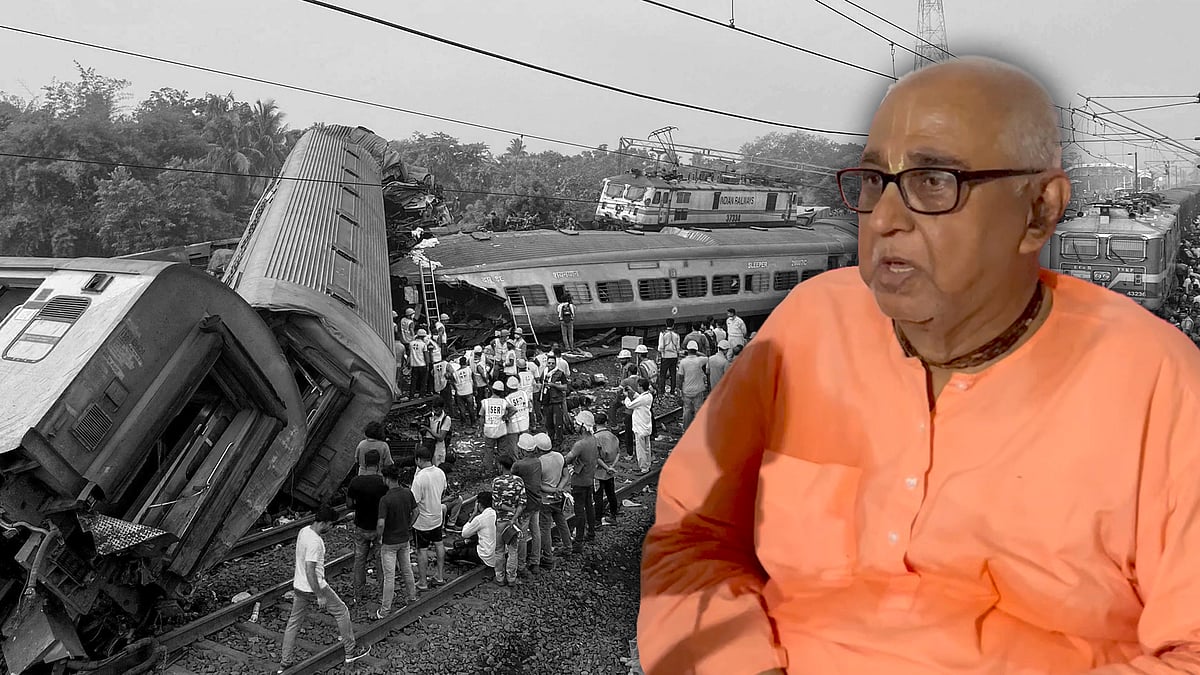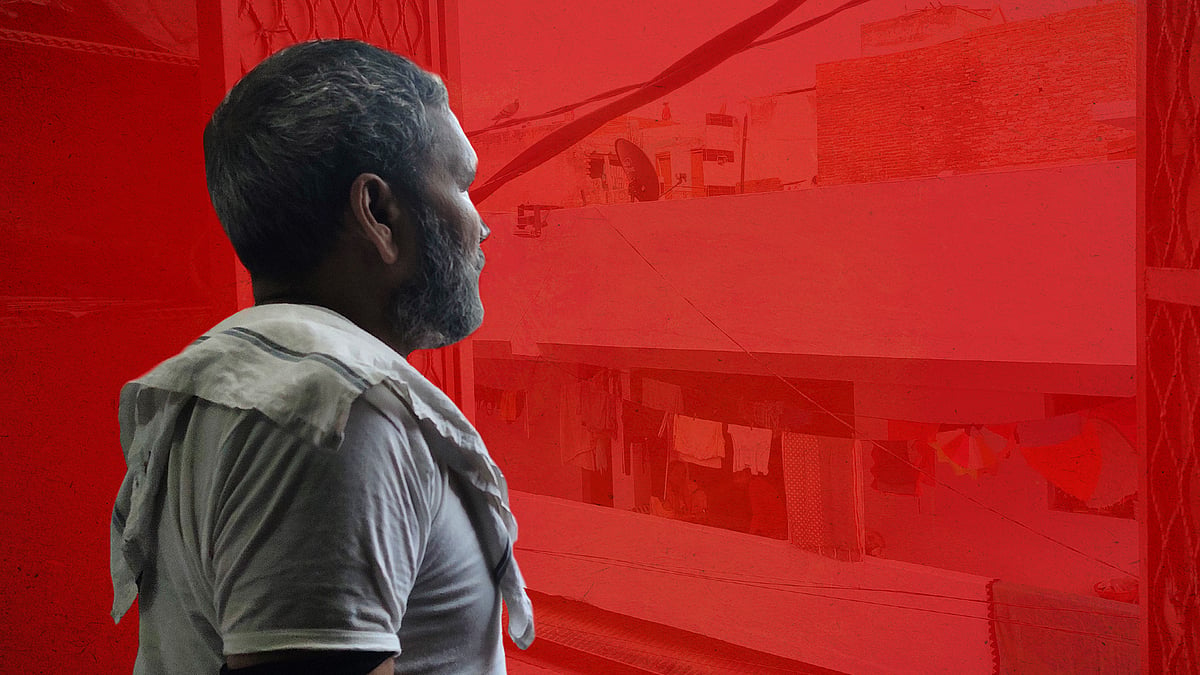21 years later, why the Gujarat riots continue to define India today
A first-person account of a Muslim growing up in Ahmedabad.
In 2019, my friend invited me over to her home for a birthday dinner.
She, like I, lived in Ahmedabad. Her father was a municipal corporator within the Bharatiya Janata Party. I must admit to some trepidation. Merely a few weeks prior, I had been alone in her house with her grandfather, our friends having not arrived yet, and he’d evicted me. It left me with a lingering sense of discomfort.
Once I arrived, my friend leaned in, her words barely audible. “Tell everyone in there your name is Naman, not Noaman,” she whispered.
I was flooded with questions and concerns but I withheld them for the time being. Instead, I went along with it and introduced myself as Naman, a decision that would come to trouble me deeply. The gravity of what she’d asked of me – to alter my own name – hit harder once I returned home that night.
The incident forced me to confront the harsh reality that, in certain quarters, a name could be wielded as a divisive tool. It pointed to a deeper societal issue: polarisation and biases based on one’s religious identity. For me, it underscored the disheartening extent to which my own identity was subject to external pressures and prejudices.
Tragically, this undercurrent of deep-seated divisiveness mandates a gaping schism between Hindus and Muslims in India today, stymying any prospects for meaningly cross-community bonds. The level of animosity is truly astounding.
For the past 22 years, the BJP in my home state of Gujarat has been consistently victorious in state elections. A substantial portion of its support base hails from the Hindu populace. Meanwhile, Muslims constitute the largest minority in the state and a majority of them align with the Congress party.
I'm also quite vocal on social media, which means I frequently voice my criticisms of the BJP and the right. As a result, I've lost touch with many of my school friends. Some of them even use abusive language and pass disparaging remarks about my community due to my strong opinions. These are the people who will condemn discrimination against Black populations in the United States, but stay conspicuously silent over similar treatment of Muslims in their own country.
In my experience, much like the indoctrination that occurs within RSS shakhas, many children in Gujarat grow up imbibing the belief that Muslims are their adversaries and friendships with them are discouraged. Being a Muslim in Ahmedabad is, unfortunately, a disheartening experience. As I got older, I realised that the families of my friends may disapprove of their association with me, solely because of my Muslim identity.
I’ve spent my entire life in Ahmedabad, nestled within the heart of Gujarat, a state marred by the harrowing events of 2002.
Gujarat’s trajectory is celebrated for its economic progress, its so-called “development model” that led to an extraordinary surge in growth rate. It’s characterised by an innovative interpretation of the neoliberal policies of the then chief minister Narendra Modi. What strikes me is how even the most adverse situations are cloaked in euphemisms. The act of essentially marketing one’s state is artfully labelled as ‘liberalisation’, a term I find rather ironic.
From February 28, 2002, Gujarat became the epicentre of a wave of violence that resulted in unfathomable human suffering. During pogroms that unfolded over several weeks, the victims were primarily Muslims, who endured not only physical violence but the loss of their homes, businesses and, most tragically, their loved ones.
The toll on human life and economic stability was staggering. Muslim communities suffered a loss of approximately Rs 3,800 crore.
This horrific chapter in Gujarat’s history continues to cast a long shadow, shrouded in allegations that it was a premeditated, coordinated campaign of brutality. The perpetrators are said to be affiliated with the greater Sangh Parivar.
Adding to the gravity of the situation is the alleged complicity of the state government and the very institution tasked with upholding law and order, the Gujarat police. The central government at the time, led by the BJP, also failed to declare a state of emergency, seen by many as a form of complicity in the horrors that unfolded.
Despite evidence and outcry, authorities failed to bring the main orchestrators of the violence to justice. An SIT gave Modi and 63 others a clean chit over their alleged role in the violence – a decision upheld by the Supreme Court. The dark cloud of impunity persists. In the aftermath of the tragedy, the state government continued to deny victims their rights.
The suffering endured by Gujarat’s Muslim community is a painful and unresolved issue. Today, many Muslims in Gujarat, particularly those living in ‘relief colonies’, still grapple with the consequences of the violence. The scars, both physical and psychological, have not healed and the victims’ quest for justice and reparation is far from over.
Filmmakers have endeavoured to illuminate this subject, spotlighting the role of the RSS and the BJP in the 2002 violence. However, the Gujarat government conveniently imposed bans on such films, including Parzania, the story of a Parsi couple searching for their 10-year-old son during the riots. It was inspired by the real-life account of Azhar Mody, who went missing after the Gulbarg Society massacre on February 28, 2002. Other films, like Firaaq and Chand Bujh Gaya, were banned too. In contrast, The Kashmir Files received tax-free status in the state.
From 2002 to present day
Violence against Muslims in India often manifests in the form of mob attacks, primarily perpetrated by members of the Hindu community. This violence is linked to the alarming increase in Islamophobia over the last few years, especially in north and west India where communal tensions are more pronounced.
A 2017 report by IndiaSpend revealed that a staggering 84 percent of victims of cow vigilante violence in India between 2010 and 2017 were Muslims. Nearly 97 percent of these attacks occurred after May 2014, when Narendra Modi’s government took oath.
The primary Hindu organisations linked to the violence in India are the Vishwa Hindu Parishad, the Bajrang Dal, and the Rashtriya Swayamsevak Sangh. These groups, in conjunction with the Bharatiya Janata Party, collectively constitute the "sangh parivar." Scholars have also criticised the complicity of the BJP and the Shiv Sena in these incidents of violence, suggesting that they employ violence against Muslims as part of a broader electoral strategy. For instance, research by Raheel Dhattiwala and Michael Biggs in 2012 indicates that instances of violence are more prevalent in regions where the BJP faces fierce electoral opposition, as opposed to regions where it enjoys substantial support.
It's noteworthy that following the riots, there have been no significant instances of violence against Muslims in Gujarat while the BJP has managed to secure electoral victories in Gujarat continuously since 2002.
The persistent occurrences of Hindu-Muslim discord in post-Partition India are deeply disconcerting. Conflicts of this nature persisted throughout the latter half of the 20th century, resulting in more than 7,000 fatalities during the period spanning 1950 to 2000. In the same period, India recorded nine instances of major communal violence, including the Nellie massacre in 1983, the 1992 Bombay riots, the 2013 Muzaffarnagar riots, and the more recent Delhi riots of 2020.
These events rarely led to the conviction of perpetrators. Meanwhile, the government employs colonial-era laws such as the Unlawful Activities (Prevention) Act against individuals like Umar Khalid who voiced dissent against the Citizenship Amendment Act and the National Register of Citizens.
Paradoxically, the same government granted premature release to 11 men who had been convicted of gang-raping a pregnant Muslim woman and murdering 14 members of her family, including a three-year-old child. These convicts were part of a Hindu mob involved in the 2002 riots in Gujarat. Shockingly, upon their release, they were welcomed with garlands at the Vishva Hindu Parishad office. One of them even shared a stage with BJP lawmakers in Gujarat. In stark contrast, Umar Khalid has been in jail for three years, his bail plea adjourned seven times by the Supreme Court.
So, the indelible recollection of an evening spent at my friend’s home is a poignant reflection on the complexities intertwined within our social fabric. It compels us to squarely address deeply-ingrained biases and divisions that are perpetrated by external influences, including the polarising impact of one’s religious identity. The undercurrent of discord between communities is a stark reality, impeding the creation of genuine inter-community bonds.
The enduring scars of the 2002 Gujarat riots still loom large, an unwavering reminder of the need for governments to be accountable and to safeguard their citizens. The victims have borne immeasurable suffering. Their ongoing pursuit of justice, 21 years later, needs not only recognition but substantial restitution.
More than ever before, it’s imperative to confront euphemisms that often obscure distressing realities. Gujarat’s much-lauded economic advancement should not eclipse the poignant history of violence and profound loss. It is only through united efforts, irrespective of religious identities and backgrounds, that we can heal the enduring wounds of the past and construct a brighter future.
 Ground report: How a bogus communal angle was added to the Odisha train tragedy
Ground report: How a bogus communal angle was added to the Odisha train tragedy ‘Stopped going to cops’: Delhi riots victim struggles to keep up pursuit of justice
‘Stopped going to cops’: Delhi riots victim struggles to keep up pursuit of justice 